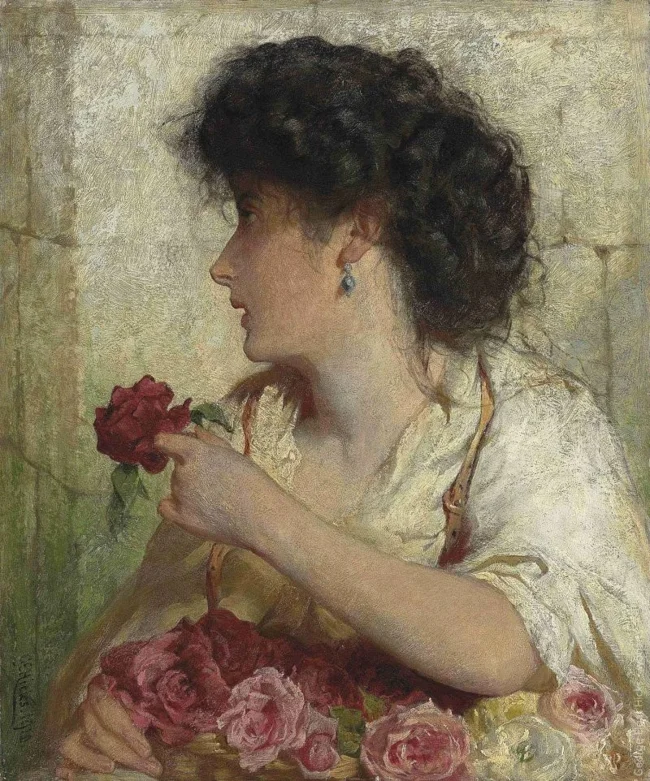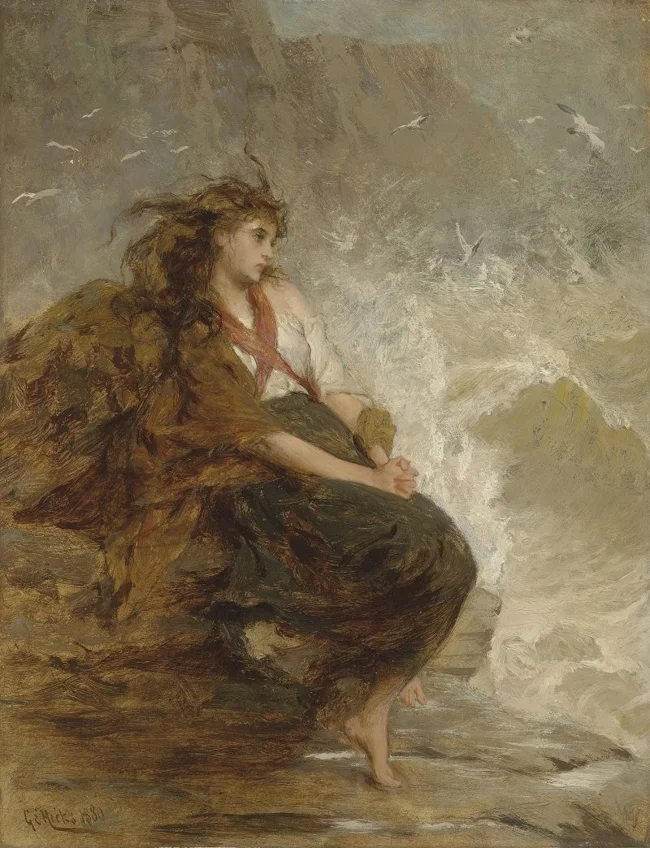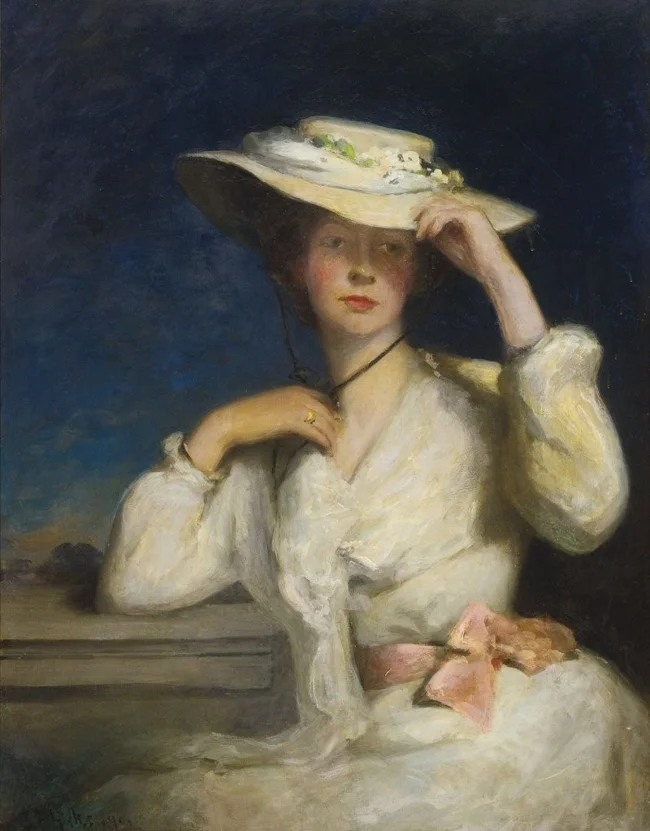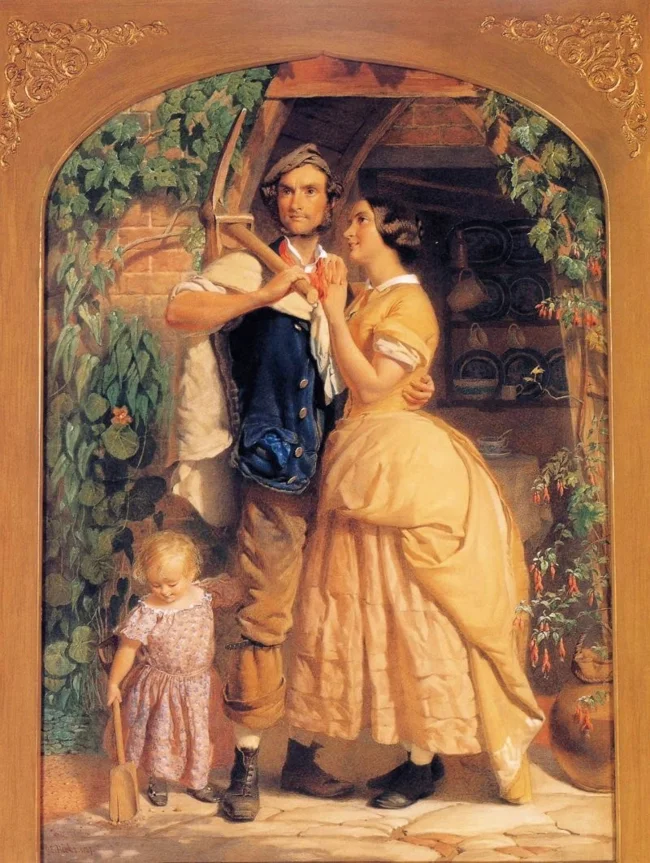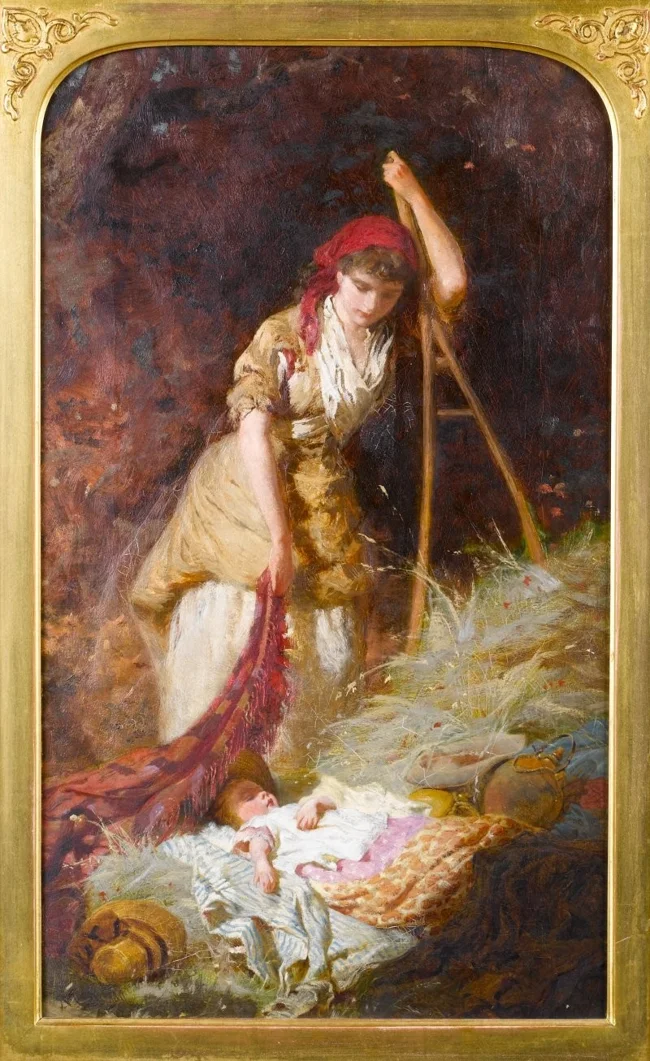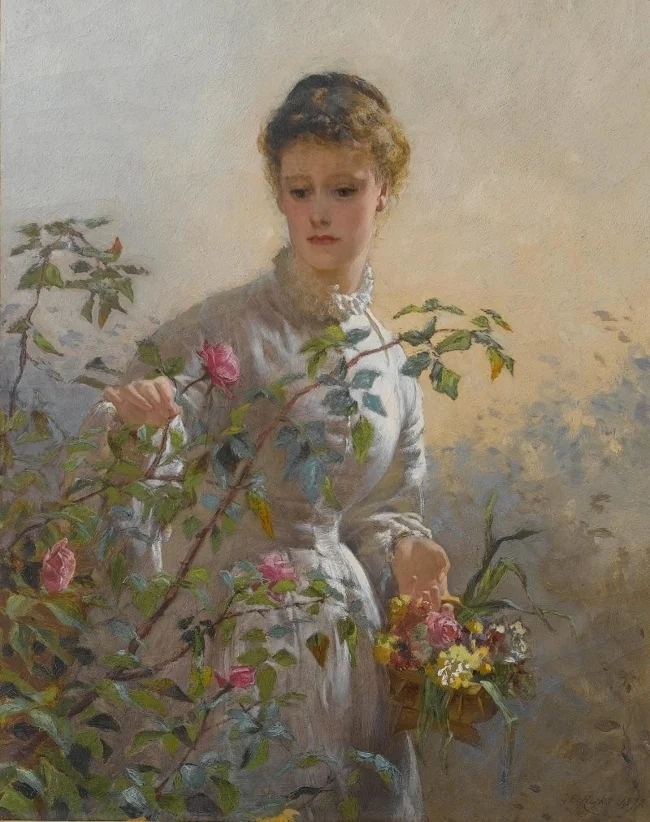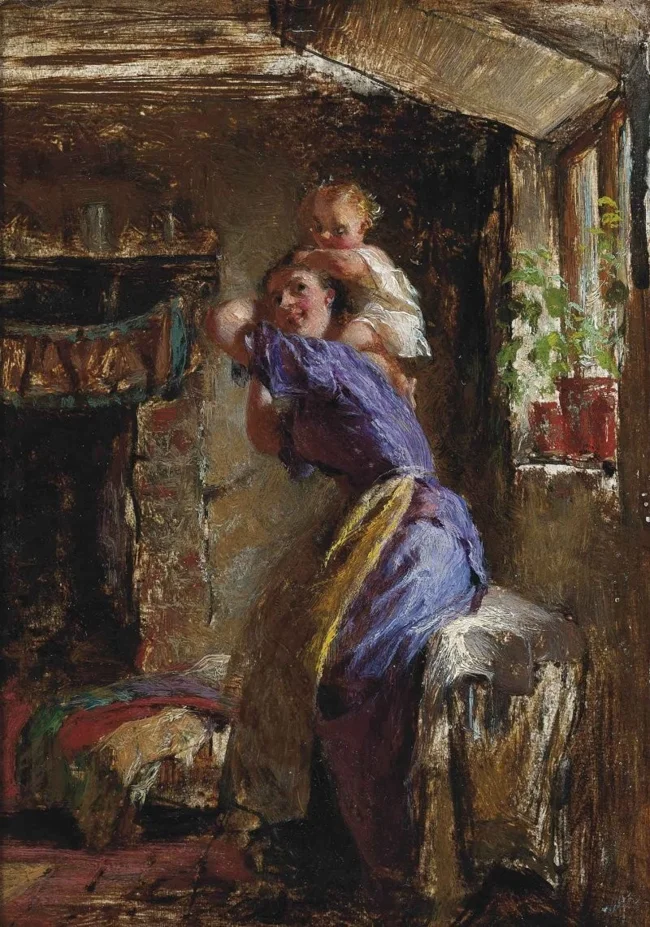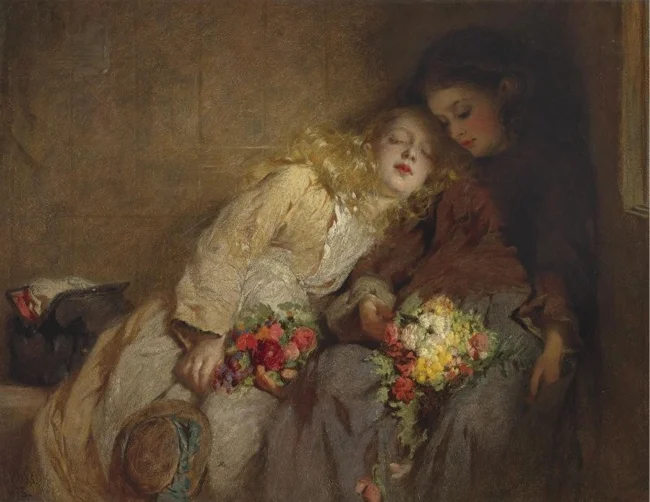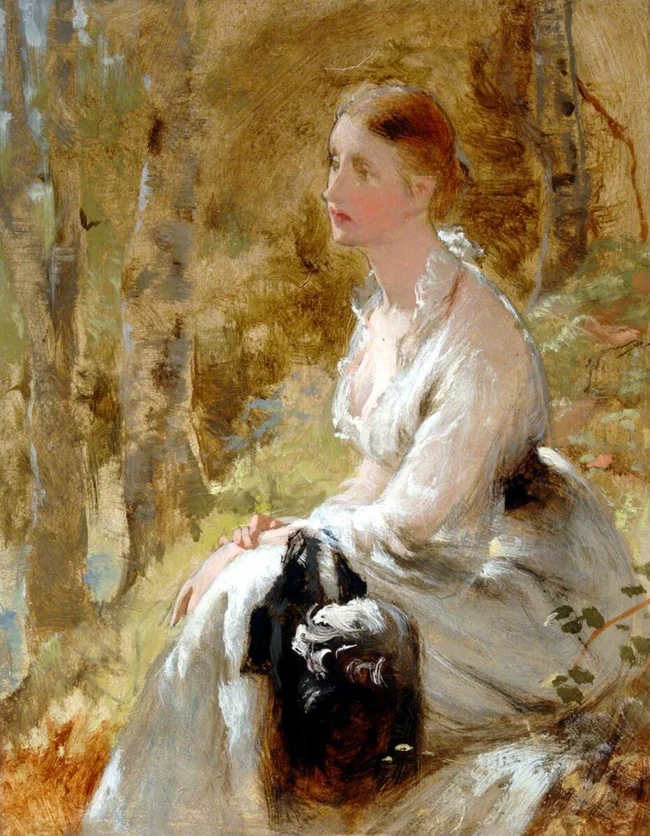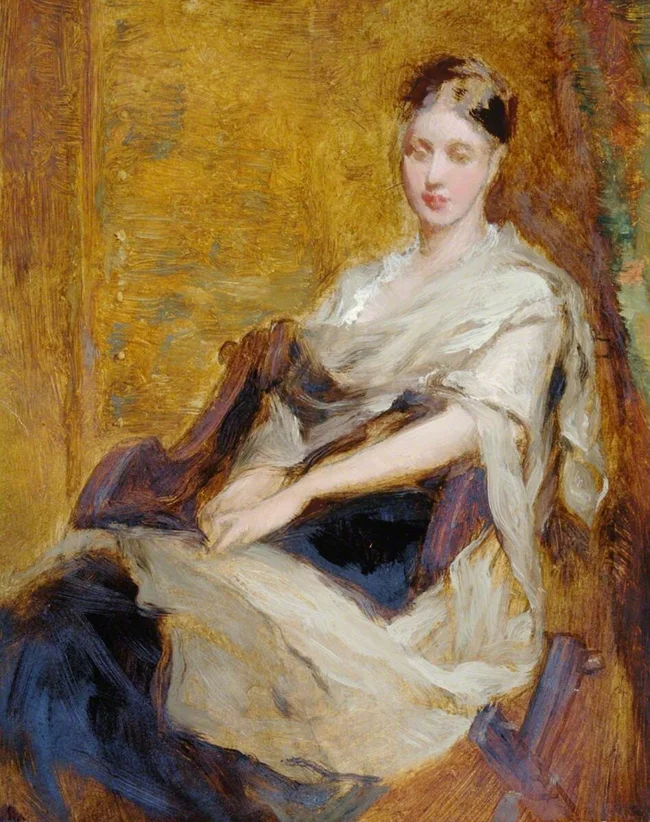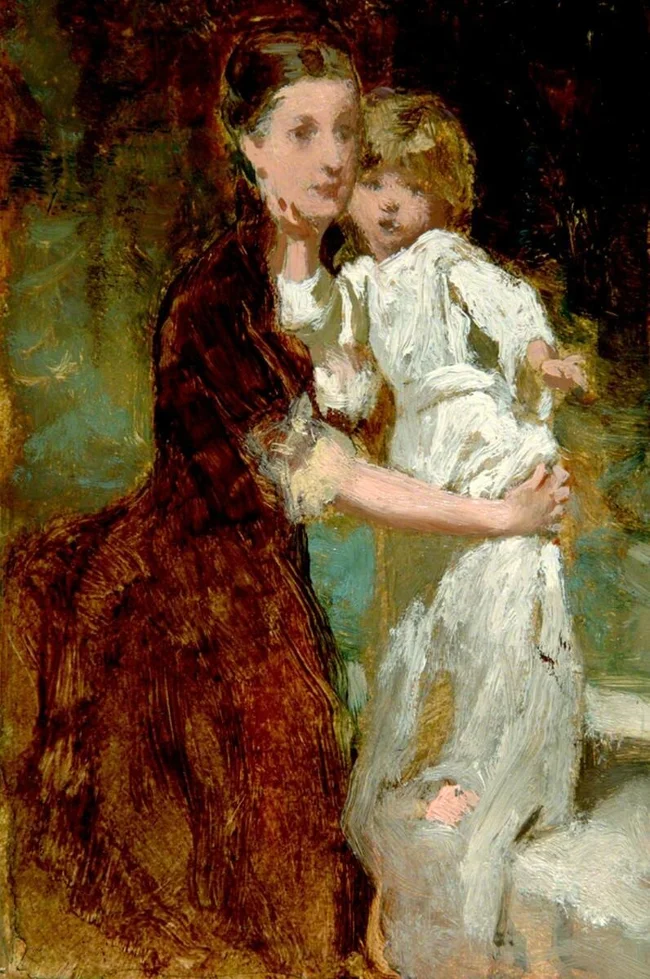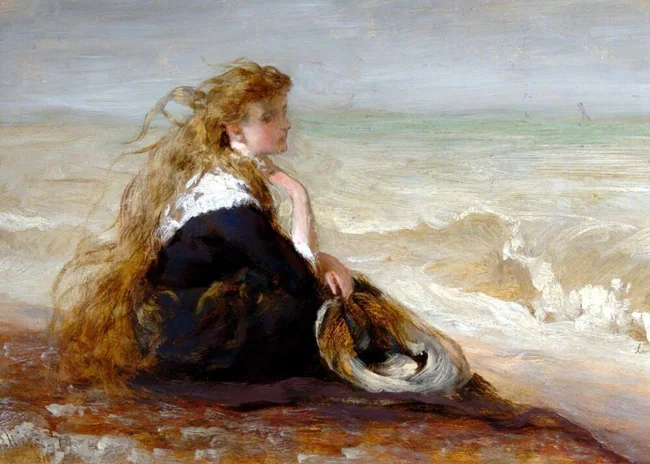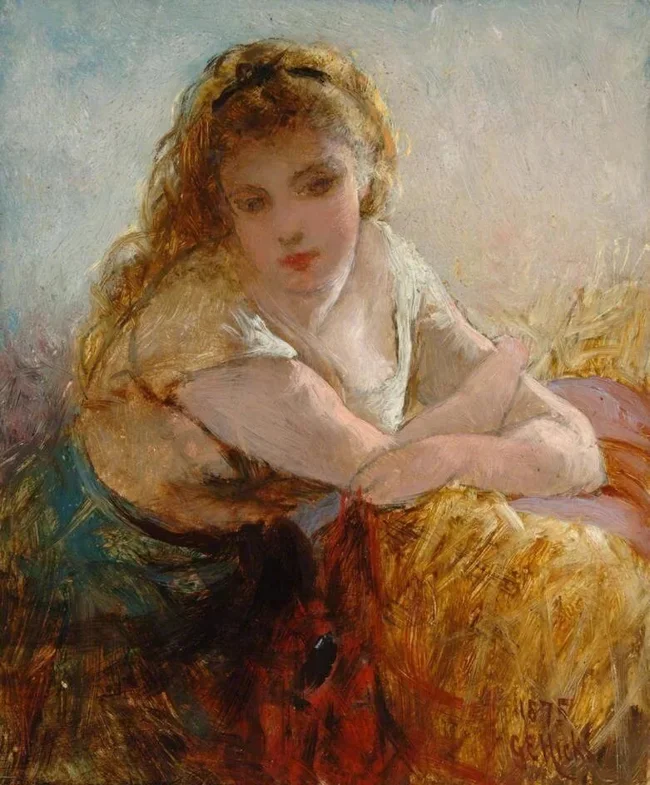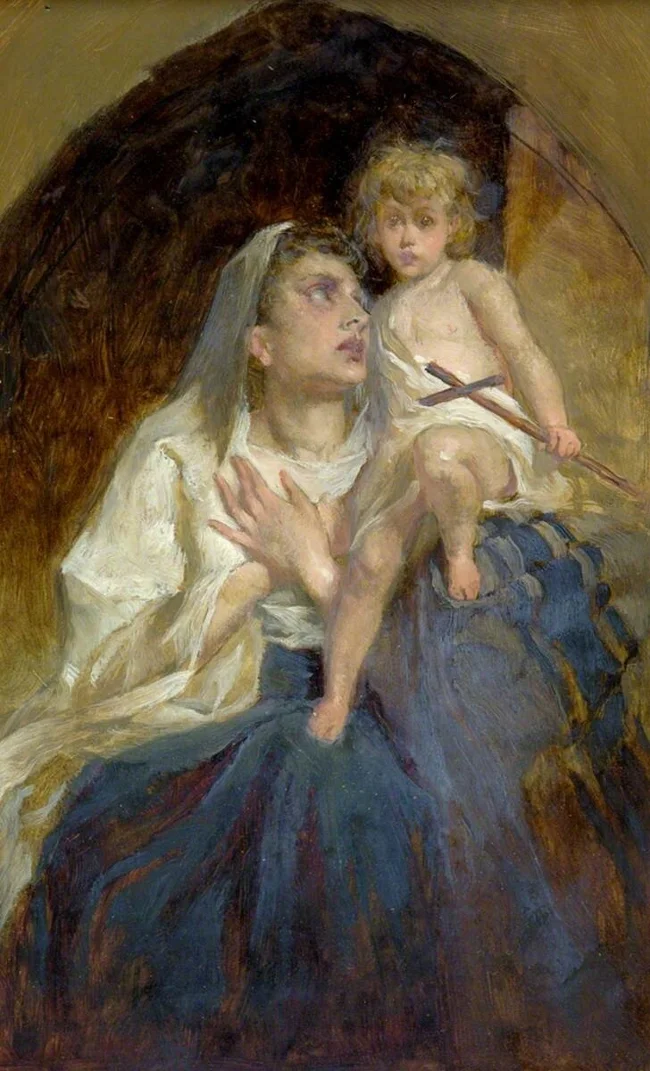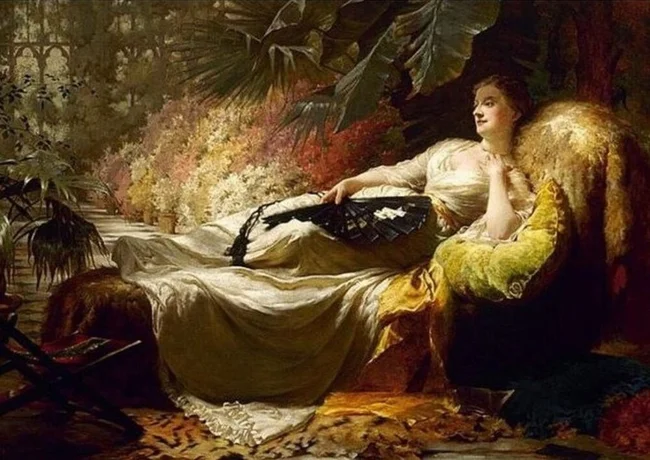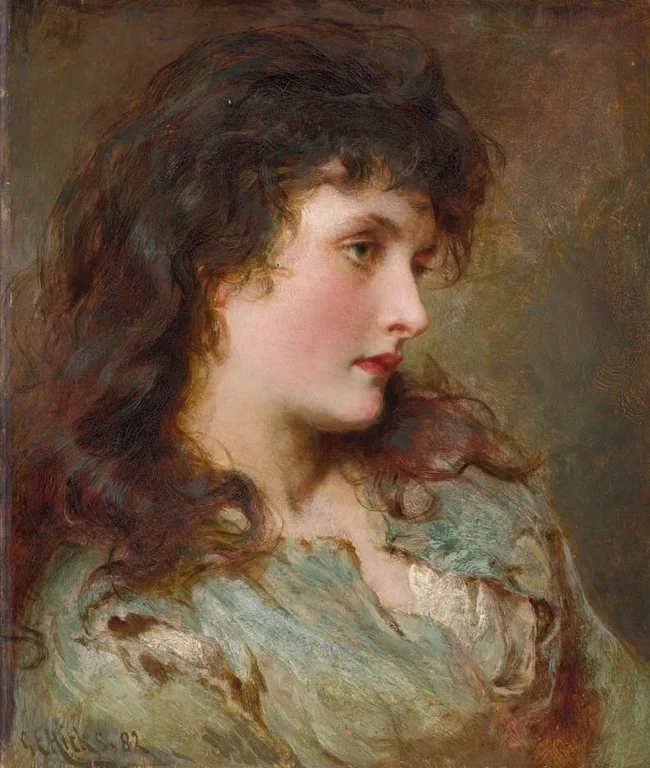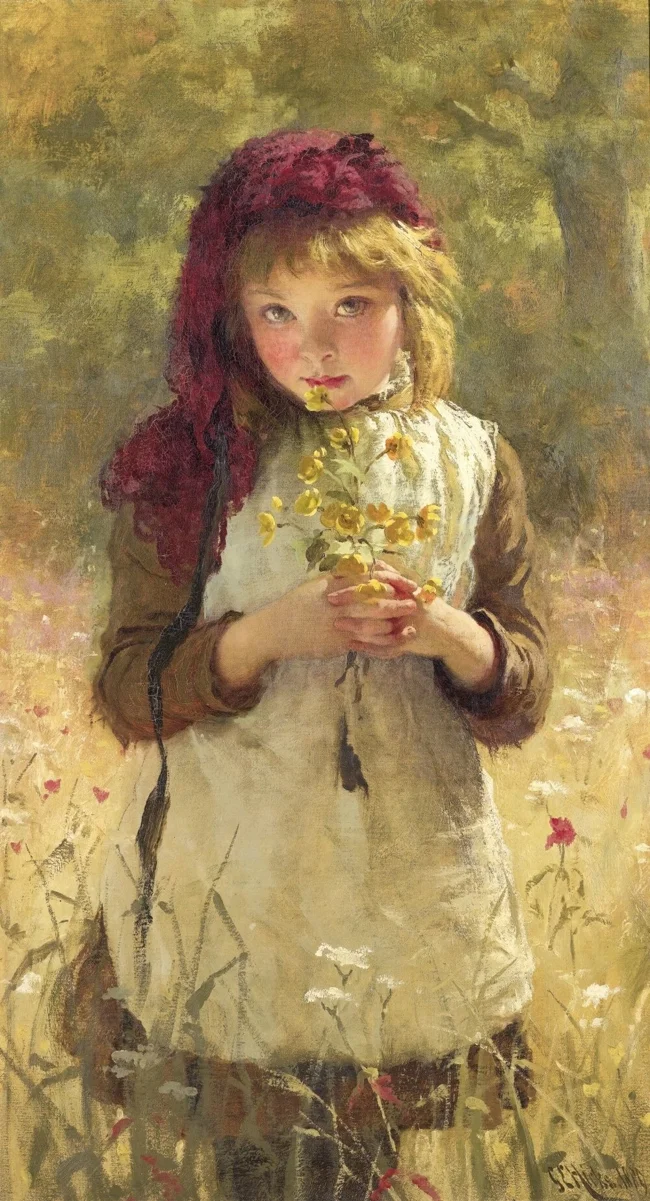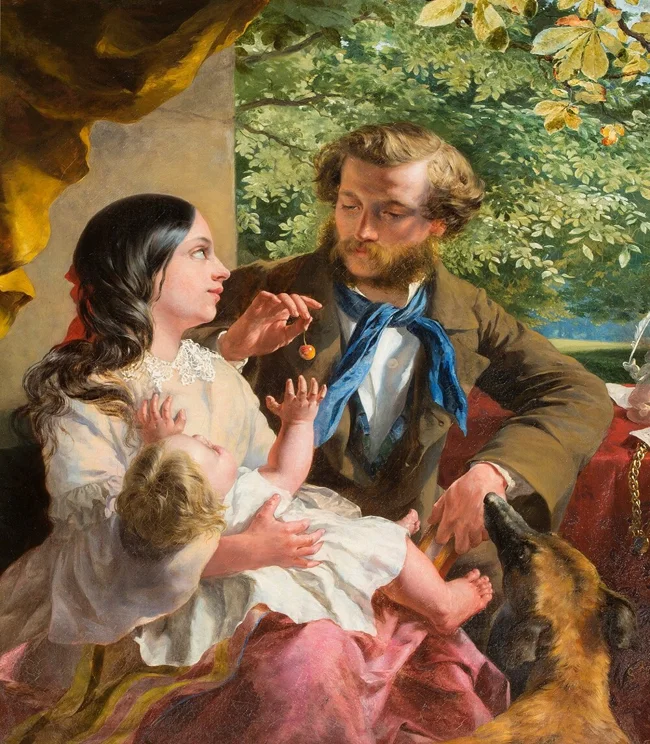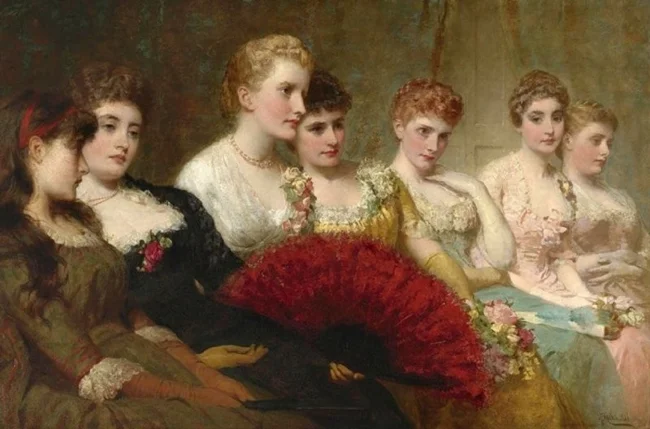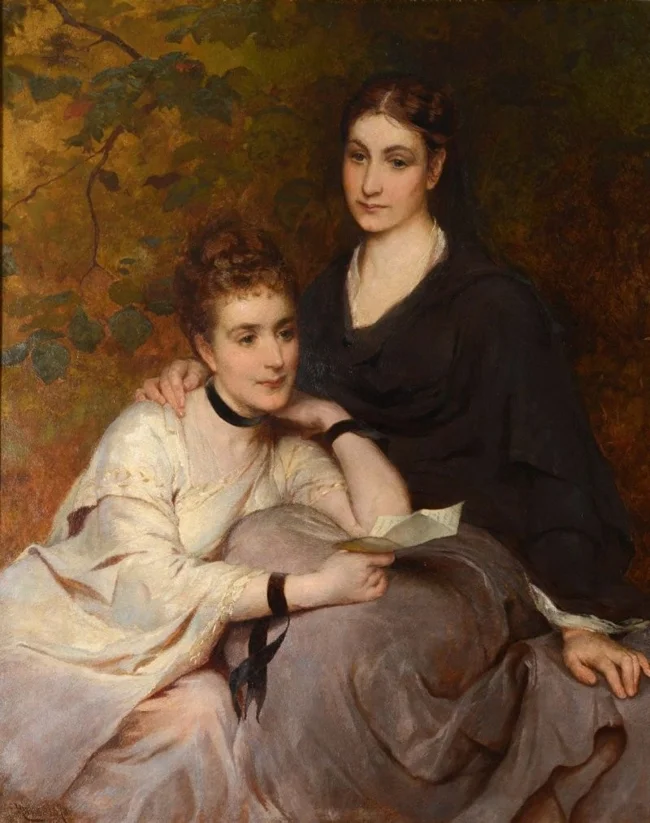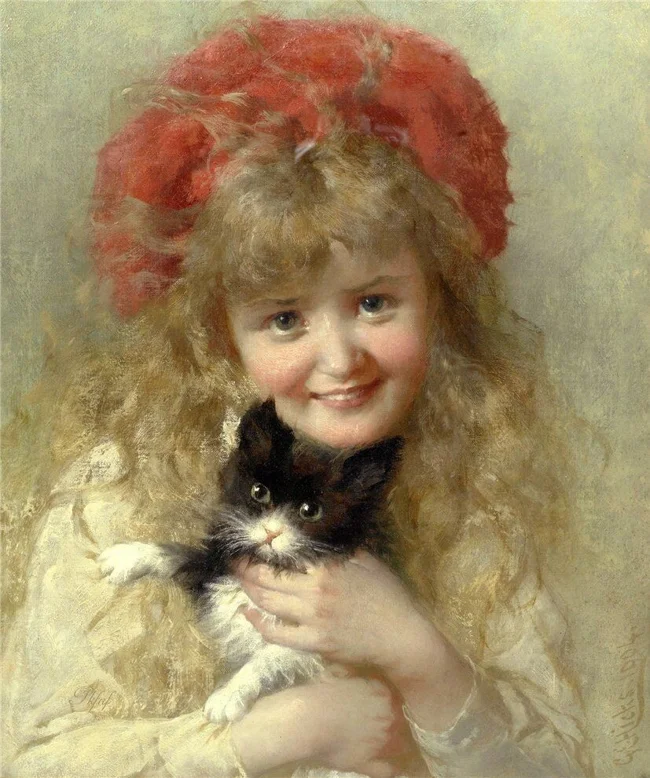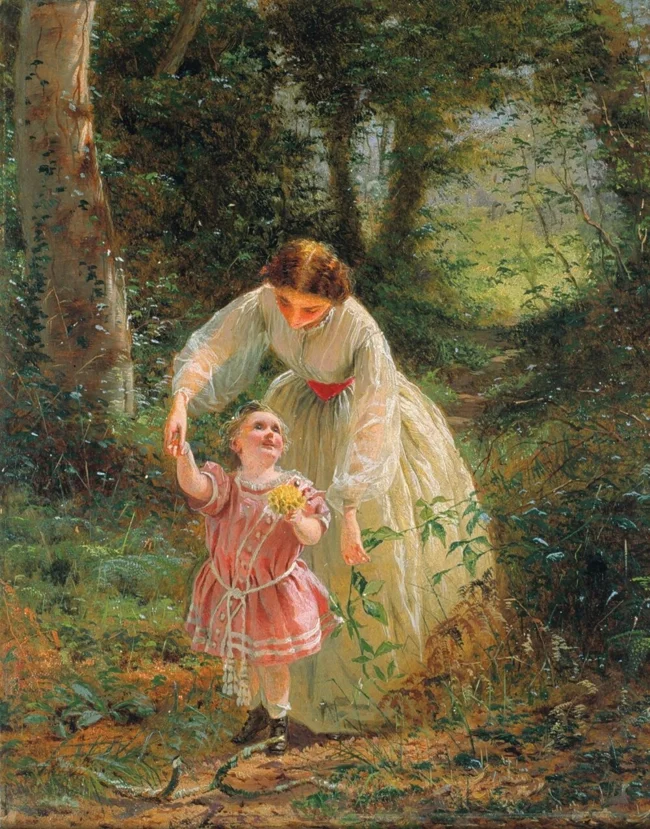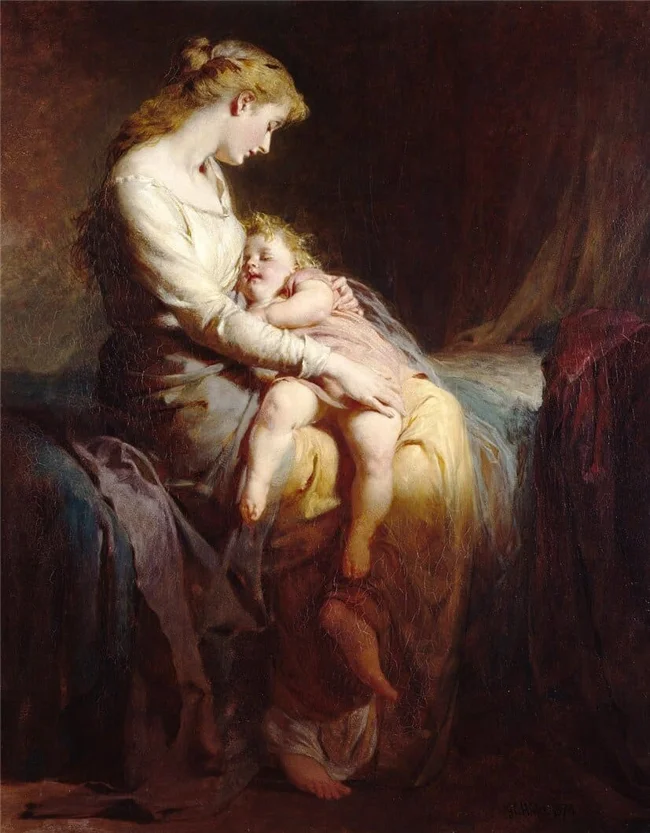Poet of female beauty and spring George Elgar Hicks (30 photos)
The life of this painter is a clear example of the truth of the statement that fate will also find behind the stove if a person is predetermined by a specific vocation. 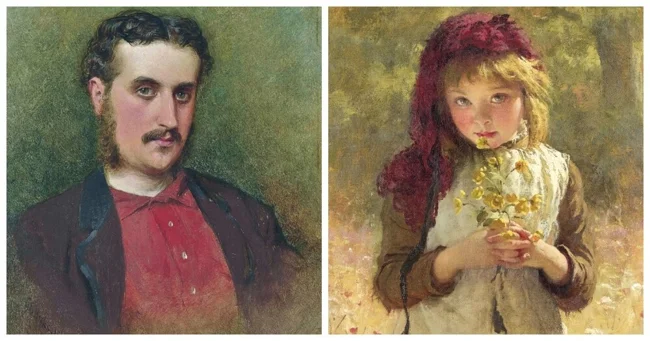
George Elgar Hicks (1824 – 1914) was an English artist of the Victorian era. 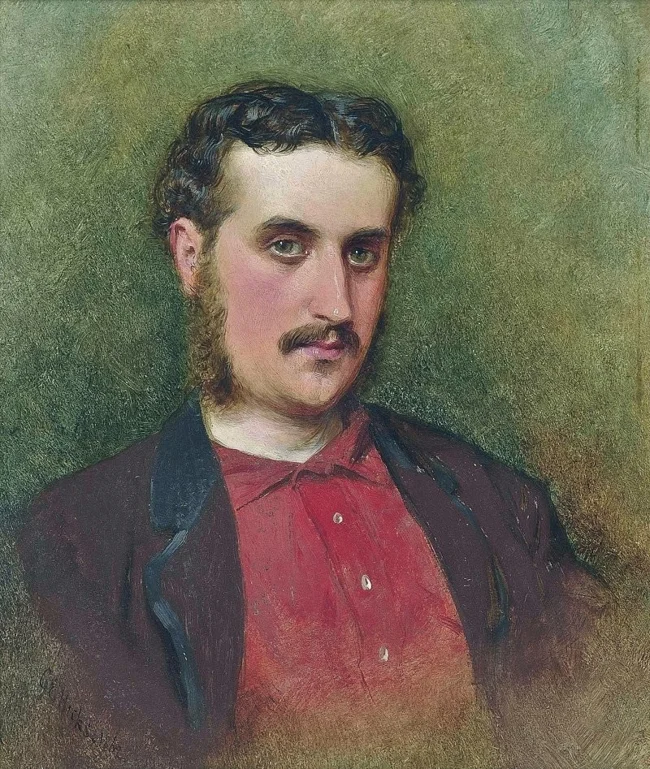
Self-portrait
He is best known for his large genre paintings, which emulate William Powell Frith in style, but was also a society portraitist.
George Elgar Hicks was born on 13 March 1824 in Lymington, Hampshire, the second son of a judge. His parents intended Hicks to become a doctor. And, like an obedient son, he studied medicine at college in 1840-1842.
However, after three years of “ardent and unpleasant study,” Hicks decided that he wanted to be an artist, having loved to draw since his youth. Due to circumstances, Hicks began his studies much later than most artists of his time. 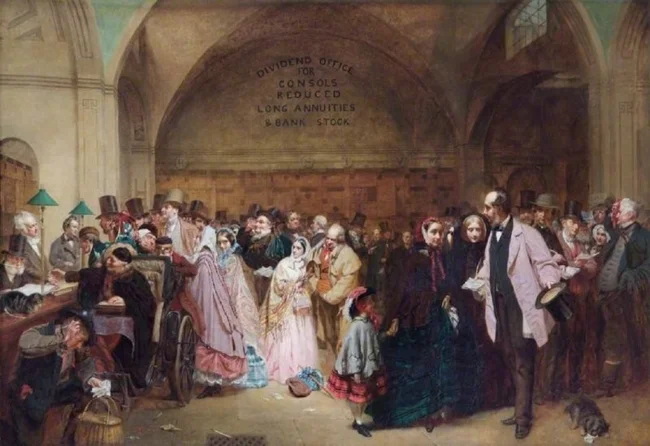

"Dividend Day at the Bank of England"
In 1843 Hicks attended Sass Academy and by 1844 he had entered the Royal Academy. In 1847 he married Maria Harisse, and over the next seven years they had six of their eight children.
During this period he did not achieve much success as an artist and later called his work of that time “small and unimportant.” He blamed the strain of his family life, which meant he had little time to study art and interact with other artists.
In 1859, Hicks painted his first large genre painting, Dividend Day at the Bank of England. This is a typical genre painting, depicting a scene with the participation of representatives of various social strata of society.
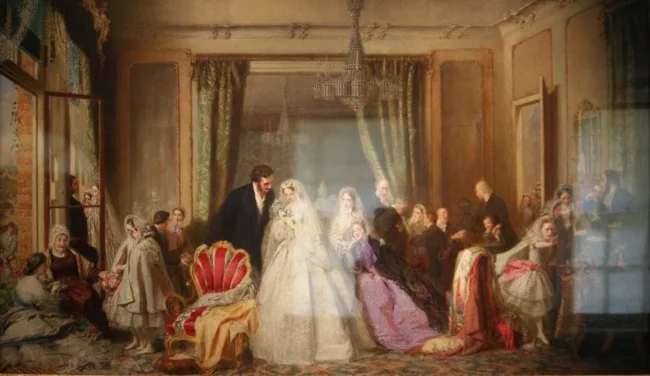
"House Change"
In subsequent years, he painted several more large paintings dedicated to modern life, which were generally poorly received by critics.
By the late 1860s, the popularity of genre painting had declined and Hicks began to focus on historical subjects, leading to the introduction of society portraits in the 1870s. And the painter completely focused on creating portraits, which were a huge success and provided a comfortable life.
In 1884, Hicks married again after Mary's death in 1881. He retired in the 1890s and died a month before the First World War was declared.
